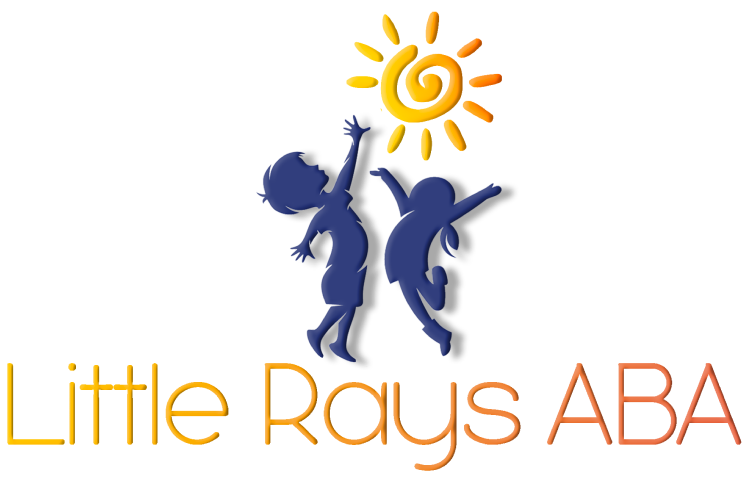Autistic Meltdown vs. Panic Attack
Autistic meltdowns and panic attacks are often confused because they can look similar—both involve intense emotional and physical reactions. However, meltdowns are common in autism and stem from sensory overload or frustration, whereas panic attacks are typically linked to anxiety.
In this blog, we’ll break down the differences between autistic meltdowns and panic attacks, including their causes, symptoms, and how to help someone through each situation.
What Is an Autistic Meltdown?
An autistic meltdown is an intense response to overwhelming sensory, emotional, or cognitive stress. It is not a tantrum or a way to gain attention—it is an involuntary reaction when an autistic individual’s ability to cope becomes overloaded.
Causes of Autistic Meltdowns
Autistic meltdowns are typically triggered by:
- Sensory overload (bright lights, loud noises, strong smells, crowded spaces)
- Sudden changes in routine (unexpected transitions, canceled plans)
- Emotional overload (frustration, anxiety, social difficulties)
- Communication challenges (not being understood or struggling to express needs)
- Physical discomfort (hunger, exhaustion, illness)
Symptoms of an Autistic Meltdown
Autistic meltdowns can look different for each person, but common signs include:
- Crying, screaming, or yelling
- Repetitive behaviors (rocking, hand-flapping, pacing)
- Shutting down or withdrawing (becoming nonverbal, covering ears, hiding)
- Aggressive reactions (hitting, biting, kicking—usually directed at objects or self, not others)
- Loss of control over emotions and body movements
A meltdown is a reaction to being overwhelmed, and the person is not in control of their response at that moment.
How to Support Someone Having an Autistic Meltdown
If someone is experiencing an autistic meltdown:
- Remove Triggers: Reduce sensory input by dimming lights, lowering noise, or moving to a quiet space.
- Give Them Space: Avoid overwhelming them with questions or instructions. Let them regulate at their own pace.
- Use Calming Strategies: Encourage deep pressure (weighted blankets, firm hugs if welcomed) or repetitive movements.
- Remain Calm: Stay patient and avoid reacting with frustration.
- Respect Their Needs: Some may need silence, while others may need reassuring words.
A meltdown needs time to pass—do not try to force the person to "snap out of it." Once it’s over, allow them to recover without pressure.
What Is a Panic Attack?
A panic attack is a sudden surge of intense fear or anxiety that triggers severe physical reactions, even when there is no real danger present. Unlike autistic meltdowns, panic attacks are often linked to anxiety disorders rather than sensory overload.
Causes of Panic Attacks
Panic attacks can be triggered by:
- Stressful situations (public speaking, exams, social interactions)
- Fear-based thoughts (worrying about health, danger, or embarrassment)
- Past trauma or PTSD (triggers related to past experiences)
- Physical health factors (low blood sugar, dehydration, lack of sleep)
- Caffeine or stimulants (too much coffee, medication side effects)
Sometimes, panic attacks happen without any obvious trigger.
Symptoms of a Panic Attack
Panic attacks can come on suddenly and feel terrifying for the person experiencing them. Common signs include:
- Racing or pounding heartbeat
- Shortness of breath or feeling like you can’t breathe
- Chest pain or tightness
- Dizziness or lightheadedness
- Shaking or trembling
- Feeling like you’re losing control or “going crazy”
- Intense fear of dying or having a heart attack
A key difference is that a panic attack is often linked to fear and anxiety, while an autistic meltdown is triggered by overwhelm and sensory overload.
How to Support Someone Having a Panic Attack
If someone is experiencing a panic attack:
- Reassure Them: Remind them they are safe and the attack will pass.
- Encourage Slow Breathing: Guide them through deep, slow breaths (inhale for 4 seconds, hold for 4 seconds, exhale for 4 seconds).
- Use Grounding Techniques: Help them focus on their surroundings (e.g., “Can you name five things you see?”).
- Stay Present: Keep a calm, steady presence and avoid panicking yourself.
- Avoid Telling Them to “Calm Down”: This can feel invalidating and may increase distress.
Unlike meltdowns, panic attacks can sometimes be reduced through cognitive techniques like shifting focus or reframing thoughts.
| Feature | Autistic Meltdown | Panic Attack |
|---|---|---|
| Main Cause | Sensory overload, routine changes, frustration | Intense fear, anxiety, stress |
| Emotional State | Overwhelmed, out of control | Extreme fear, panic |
| Physical Symptoms | Shaking, crying, screaming, repetitive behaviors | Racing heart, dizziness, chest pain |
| Trigger | Sensory, environmental, emotional overload | Fear, anxiety, or unknown triggers |
| Recovery | Needs a quiet, familiar space to self-regulate | Can use breathing and grounding techniques |
| Can Be Prevented? | Sometimes, with structured routines and sensory tools | Sometimes, with anxiety management strategies |
Both conditions are distressing but require different types of support.
How to Tell the Difference in the Moment
If you’re unsure whether someone is having an autistic meltdown or a panic attack, consider these questions:
- Are they in an overwhelming sensory environment? → Likely a meltdown.
- Are they panicking over an intense fear or thought? → Likely a panic attack.
- Are they engaging in repetitive behaviors like rocking or flapping? → More common in meltdowns.
- Are they worried about dying, fainting, or losing control? → More common in panic attacks.
- Did they suddenly shut down and become nonverbal? → Can happen in meltdowns but not typical in panic attacks.
Understanding these differences can help provide the right support in each situation.
Meltdown or Panic Attack? Quiz
Result:
Supporting Autistic Individuals Who Experience Both
Some autistic people also have anxiety disorders and may experience both meltdowns and panic attacks at different times. Strategies like:
- Establishing structuredroutines
- Using sensory-friendly environments
- Practicing relaxation techniques
- Teaching emotional regulation skills
-can help reduce the frequency of both.
At Little Rays ABA, we specialize in Applied Behavior Analysis (ABA) therapy to help autistic individuals develop coping skills for sensory overload, anxiety, and emotional regulation. Our personalized programs empower children with autism to navigate challenges in a supportive way. Contact us today to learn more!
Frequently Asked Questions
Can autistic people have panic attacks?
es. Some autistic individuals also have anxiety disorders and may experience panic attacks as well as meltdowns. However, the causes and treatments for each are different.
How long do autistic meltdowns and panic attacks last?
Meltdowns can last anywhere from a few minutes to over an hour, depending on the individual and the environment. Panic attacks usually peak within 10-20 minutes and gradually subside.
Are autistic shutdowns the same as meltdowns?
No. A shutdown is when an autistic person becomes nonverbal, withdraws, or stops responding due to overwhelm. A meltdown is an external reaction (crying, screaming, etc.), while a shutdown is an internal reaction.
Sources:
- https://www.autism.org.uk/advice-and-guidance/topics/behaviour/meltdowns/all-audiences
- https://www.autismspeaks.org/sensory-issues
- https://www.levelaheadaba.com
- https://www.mayoclinic.org/diseases-conditions/panic-attacks/symptoms-causes/syc-20376021
- https://www.nimh.nih.gov/health/publications/panic-disorder-when-fear-overwhelms
- https://www.allstaraba.org/blog/daily-activities-for-autistic-adults
Unlock Your Child's Potential with Expert ABA Therapy!
At Little Rays ABA, we provide compassionate, evidence-based ABA therapy to help children with autism thrive. Our personalized approach fosters growth in communication, social skills, and independence.
Get In Touch With Us Today to Get Started With ABA Therapy!
Related Posts
MENU
GET IN TOUCH
7117 San Salvador Dr Boca Raton, FL 33433
3200 Collins Ave Miami Beach, FL 33140





